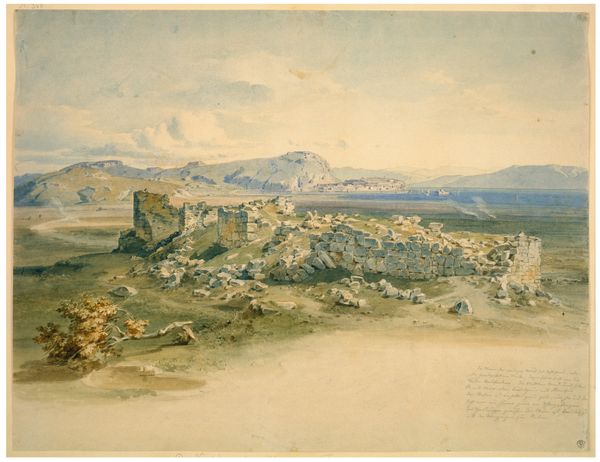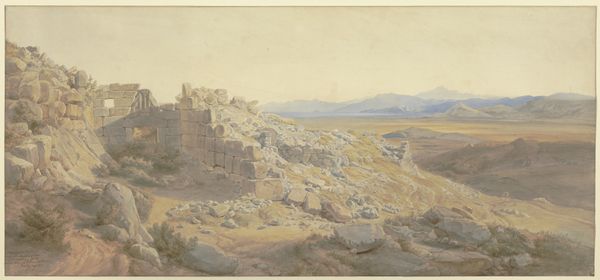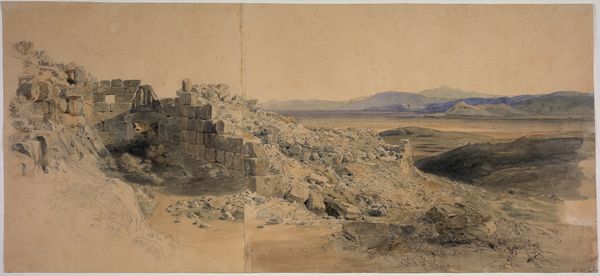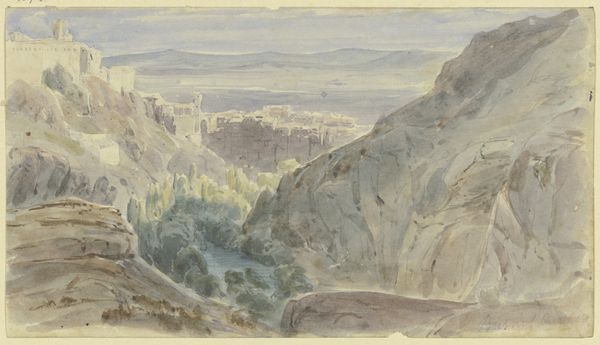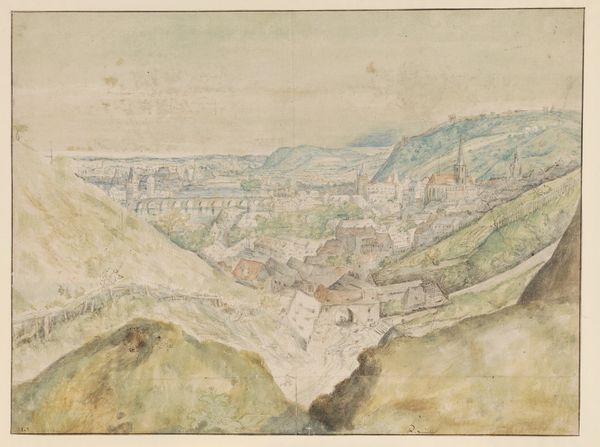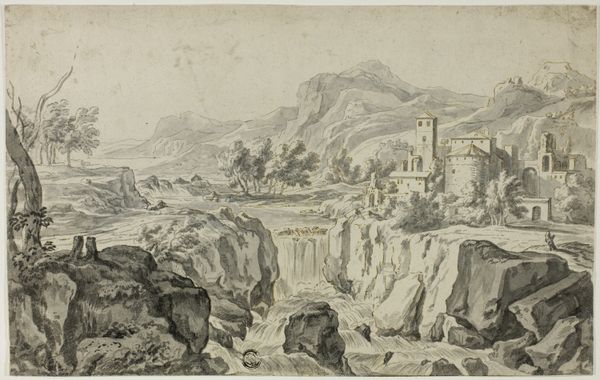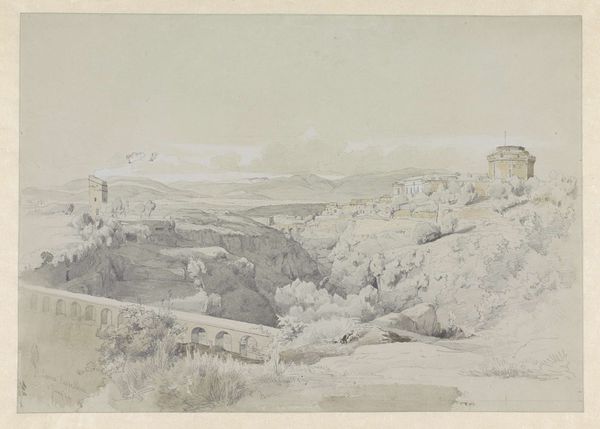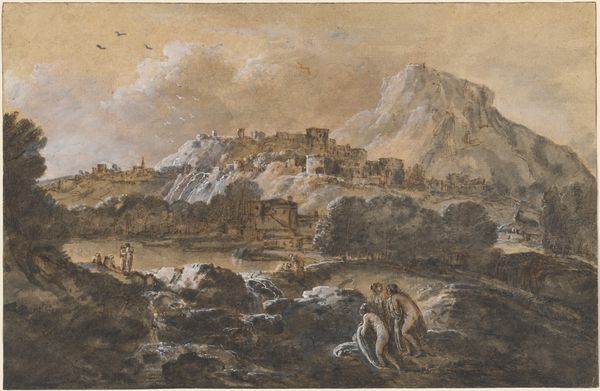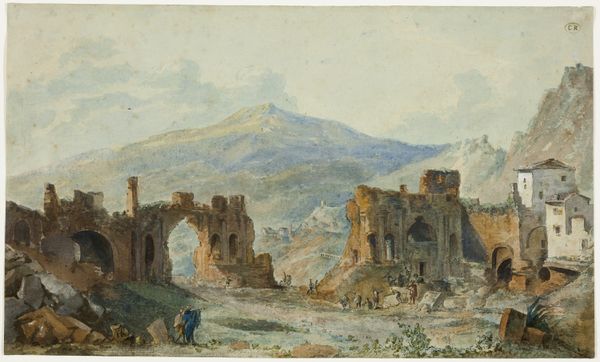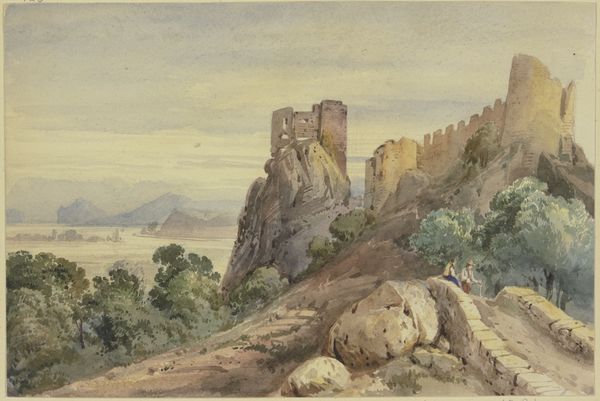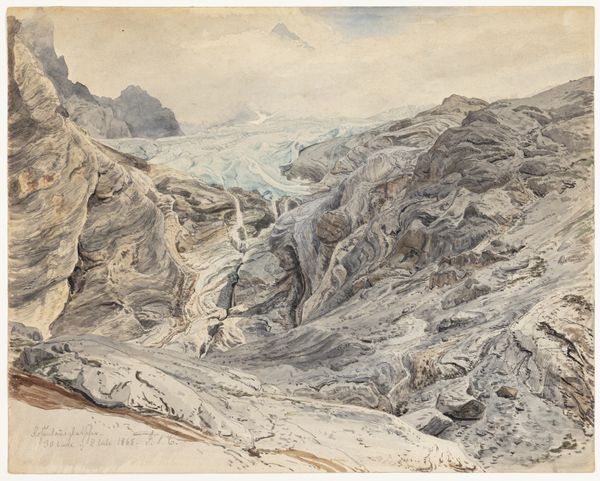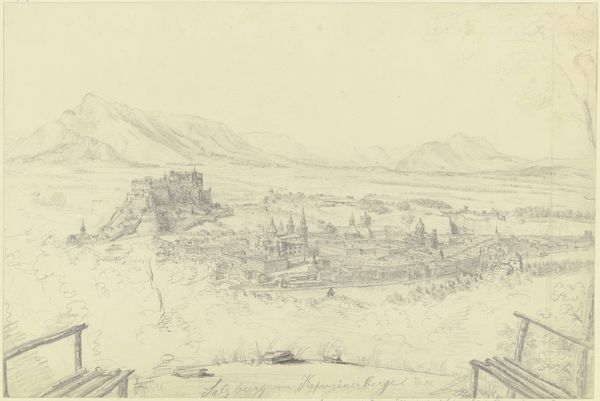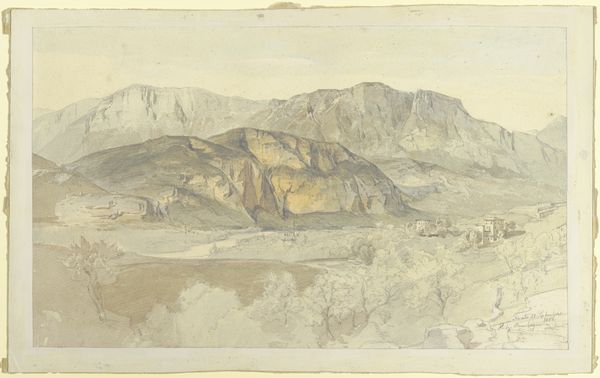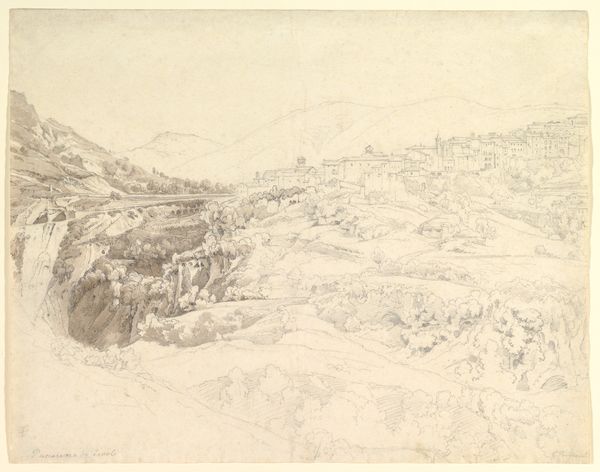
drawing, gouache, architecture
#
drawing
#
gouache
#
landscape
#
architecture
Copyright: Public Domain
Curator: Immediately, I feel the weight of history looking at Karl Friedrich Harveng’s "Ruinen von Tiryns," created around 1854. The washes of gouache create an almost palpable atmosphere around these ancient ruins. What's your take on it? Editor: My initial impression is one of stark desolation, an almost lunar landscape. The monochromatic palette and ruined structures evoke a sense of forgotten power and cultural displacement. The remnants of the archaic walls become more poignant when positioned on what looks like arid earth. Curator: Exactly. Tiryns, a Mycenaean archaeological site, speaks volumes about early social hierarchies and the labor required to construct such megalithic architecture. When we look at this image, we aren't just observing art, but also the enduring evidence of social structures from millennia ago, right? How did people organize themselves? Who benefited? Who suffered? These questions rise when observing ruins, I find. Editor: Absolutely. In terms of symbols, these massive stones resonate. For archaic people walls were for the wealthy, and these ruins can suggest how much a society cared for cultural or historical preservation. Think about the cyclical nature of empires—rising, dominating, then inevitably crumbling. We read cultural endurance within its landscape. Curator: True, and even Harveng’s decision to depict this scene—landscape painting, with a romantic ruin—is laden with sociopolitical baggage. During this period, classical antiquity was intertwined with national identity, particularly with the rise of nation-states seeking legitimization from the classical past. Editor: And if you want to think further, that fallen tree tells a story! Visually, that form communicates decline and perhaps some form of perseverance in a hard place. If the wall and the ruins show wealth, the tree symbolizes adaptation. Curator: I see your point. Thinking about ruins within our current moment also raises urgent questions about cultural heritage, ownership, and what responsibility we bear toward preserving monuments like this one. Who is accountable for telling the complex histories imbedded in a ruin and how we are supposed to protect them now? Editor: Indeed, Karl Friedrich Harveng offers a gateway into that historical narrative, a meditation on transience and our ever-evolving relationship with civilizations past. Thank you. Curator: Likewise. His choice of Tiryns as a subject challenges us to question the narratives around this landmark, and others—forcing us to consider, perhaps, who tells those stories, too. Thank you.
Comments
No comments
Be the first to comment and join the conversation on the ultimate creative platform.
